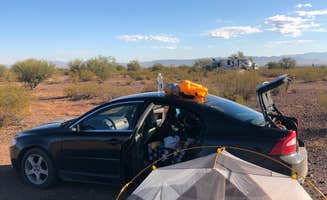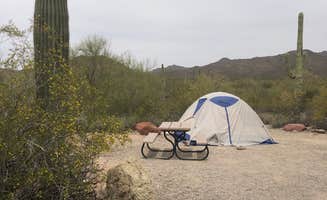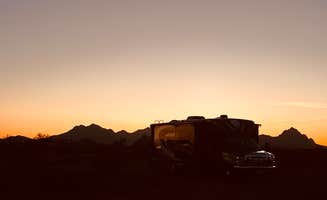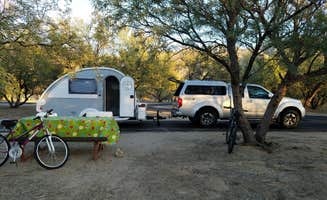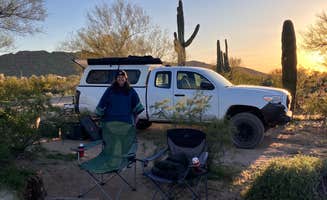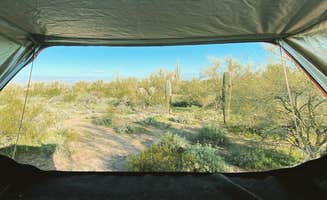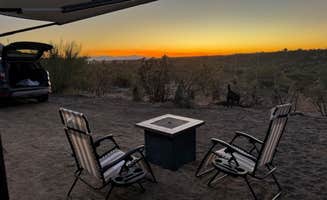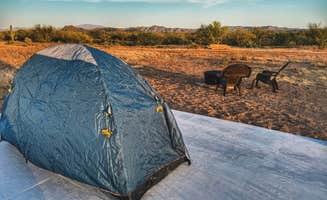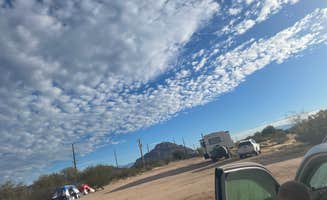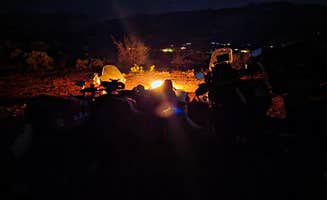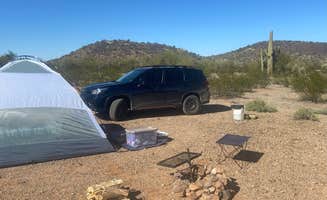The Sonoran Desert region surrounding Marana, Arizona sits at elevations between 2,000-3,000 feet, creating a unique camping environment with dramatic temperature variations between seasons. Campgrounds across the region report overnight temperature drops of 30-40°F from daytime highs, particularly during spring and fall camping seasons. The area features both established campgrounds with amenities and dispersed sites on public lands managed by BLM.
What to do
Hiking through ironwood forests: The Ironwood Forest BLM National Monument Pump Station Dispersed area offers access to unique desert hiking terrain. "This seems to be the popular dispersed camping area along North Pump Station Road within the BLM Ironwood Forest National Monument. Numerous dispersed sites along a two track dirt road on both sides of the main gravel road," notes one camper.
Stargazing from desert vantage points: Night skies at dispersed camping areas provide exceptional stargazing opportunities. A camper at Cactus Forest Dispersed reports: "The views of the stars out here were probably the best I've ever seen! No major facilities, no water, so it's pack in and pack out." Light pollution is minimal at sites farther from Tucson.
Winter citrus harvesting: Some established campgrounds in the region feature fruit-bearing trees on site. At Tucson - Lazydays KOA, a visitor noted: "Great spots, all with a seating area. Fruit trees at our spot. As it is winter now in most states, people tend to stay throughout the winter."
What campers like
Accessibility to national parks: Many camping sites near Marana provide convenient access to nearby attractions. Gilbert Ray Campground earns praise for its location: "Tucson Mountain Park offers an amazing opportunity to camp among the saguaros, just outside of the west side of Saguaro National Park. The actual park doesn't offer developed camping, so this is the best option for exploring the area."
Desert wildlife viewing: Camping in the Marana area provides opportunities to observe native wildlife. One camper at Picacho Peak State Park Campground shared: "This is a beautiful place to camp most of the year. The Summer sun can be brutal of course. I love to stop here on my way to New Mexico. There is something about being in the middle of the desert with the backdrop of the mountains and cactus that just helps you breath a little better."
Clean facilities at established sites: State park campgrounds maintain well-regarded facilities. A visitor to Catalina State Park noted: "Restrooms were open, and require masks. They were spotless! Water pipes at the campground froze overnight on an evening where temps barely touched 32 degrees. They were defrosted and flowing by 8:30am. There were also dish cleaning stations outside the restroom."
What you should know
Target shooting concerns: Several dispersed camping areas report issues with recreational shooting. At Snyder Hill BLM, one camper warned: "REALITY update: This place is a 100% CRAP HOLE and should be shutdown by the BLM. Full of marginal rundown vehicles and homeless tent campers. Trash and glass everywhere. Hwy 86 noise 24/7, recreational shooters constant adj somewhere."
Accessibility challenges: Road conditions vary significantly between sites. At Cactus Forest Dispersed, campers note: "Warning about the terrain - the sand is soft in some spots and larger rigs could get stuck. We lucked out and found a space to back our 42' camper into with no problem."
Cactus hazards: Desert plants create hazards for pets and people alike. One camper cautioned: "My only advice here is that it's not fun for dogs. (And maybe not fun for kids either?) It's incredibly prickly everywhere. Imagine that, prickly in the cactus forest? You'll want to avoid wearing sandals too."
Tips for camping with families
Shade structure planning: Summer temperatures require shade preparation. At Gilbert Ray Campground, a camper noted: "Beautiful scenery. Very full campground but everyone is friendly! Nice loop to have kids run around. Can be a lot of traffic, in and around. Not ideal for little ones but still a beautiful place."
Choosing parks with activities: Some campgrounds offer additional recreational options for children. A visitor to Tucson - Lazydays KOA reported: "Your kids will never complain of boredom here. There is an unlimited amount of activities to keep them occupied. Laundry room and showers were clean. RV sites were spacious in my opinion."
Wildlife safety education: Teaching children about desert wildlife is essential. A camper described their wildlife encounters: "We saw a pair of owls keeping their nest safe. Side note: the showers were awesome!" Scorpions, rattlesnakes, and javelinas are common in the region.
Tips from RVers
Site selection for size: RV campers should research site dimensions before arrival. At Catalina State Park Campground, a camper shared: "The sites were huge, very big-rig friendly, and private. Additional signage for numbered sites would have been helpful, but it's not hard to find your spot using the power of deduction. Backing in our 25' trailer was easy."
Electric service notes: Established campgrounds offer varying levels of electric service. A visitor to Picacho Peak reported: "The campground has a total of 85 electric sites for both tent and RV camping. Sites are suitable for RVs and/or tents. You can have up to 4 cars on each site. There are 4 sites that are handicapped-accessible. Unfortunately there aren't any water or sewer hookups available."
Dispersed camping road hazards: Road conditions at dispersed sites can pose challenges. A camper at Ironwood Forest BLM warned: "The washboard road getting to the coordinates is worse than the road within the dispersed camping area! There are a few good rolling bumps and small ditches but going slow will help."


